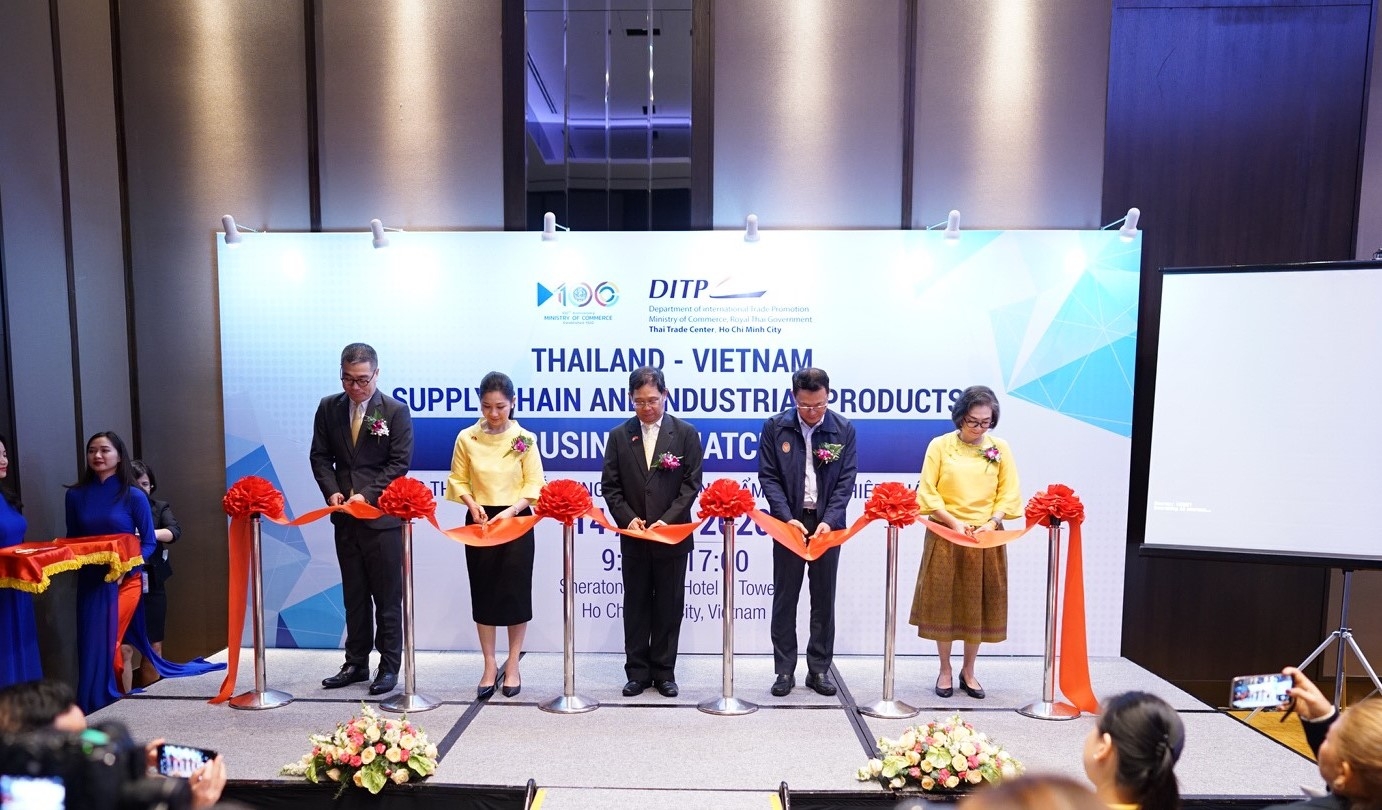Vietnam and Thai companies draw supply chain and industrial business ties tighter
 |
| Representatives of the Office of the Board of Investment and Thai and Vietnamese business cut the ribbon to open the business matching event |
The trade promotion activities, held by Department of International Trade Promotion (DITP), advance Vietnamese-Thai trade relations.
Offline business matching, in parallel with the online session to catch up with current trends, discover market potential, and facilitate business creation between Thai-Vietnamese businesses. Twelve exhibitors, including four companies for the offline session and eight companies for the online session, have been selected to showcase their best products and support Vietnamese partners to penetrate regional supply chains to produce mutual benefits.
According to DITP, in the first five months of this year, bilateral trade turnover between the two countries reached about $6.2 billion. Additionally, the Vietnamese economy has been expanding steadily over recent years, with an average GDP growth in excess of 6 per cent per annum.
The industry and construction sector accounted for around 36 per cent of the country’s GDP in 2019, up from 32 per cent in 2010. The economy of Vietnam is being increasingly driven by an influx of foreign direct investment (FDI), primarily focusing on the country’s manufacturing sector.
Thailand and Vietnam are the ASEAN's magnets for investment and business expansion. Amidst the current global trade situation, a growing number of businesses seek out the ASEAN or alternate markets to invest in. Within the region, Vietnam has emerged as a highly effective alternative for relocation thanks to its pursuit of foreign investment, competitive costs, trade agreements, and liberal investment environment.
With the establishment of the ASEAN Economic Community, Thailand and Vietnam should join hands to leverage economic diversity to attract international investors and establish production and sourcing networks in the region.
Due to the favourable location, the two countries have excellent conditions to become the gateway to the ASEAN as well as to establish cross-border supply chains to which each country can contribute according to their specific strengths. In order to make production networks competitive, the reduction of high logistics costs and the facilitation of free movement of goods and services across borders are essential.
What the stars mean:
★ Poor ★ ★ Promising ★★★ Good ★★★★ Very good ★★★★★ Exceptional
Related Contents
Latest News
More News
- Businesses ramp up production as year-end orders surge (December 30, 2025 | 10:05)
- Vietjet chairwoman awarded Labour Hero title (December 29, 2025 | 13:06)
- How to unlock ESG value through green innovation (December 29, 2025 | 10:03)
- AI reshapes media and advertising industry (December 29, 2025 | 08:33)
- FPT and GELEX sign deal to develop blockchain tech for global markets (December 29, 2025 | 08:29)
- Vietnam’s GDP forecast to grow by 9 per cent in 2026 (December 29, 2025 | 08:29)
- Women entrepreneurs are key to Vietnam’s economic growth (December 29, 2025 | 08:00)
- Vietnam's top 500 value-creating enterprises announced (December 27, 2025 | 08:00)
- The PAN Group shaping a better future with ESG strategy (December 26, 2025 | 09:00)
- Masan Consumer officially lists on HSX, marking the next phase of value creation (December 25, 2025 | 13:20)

 Tag:
Tag:




















 Mobile Version
Mobile Version